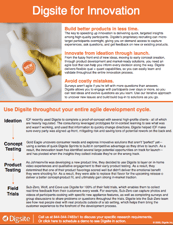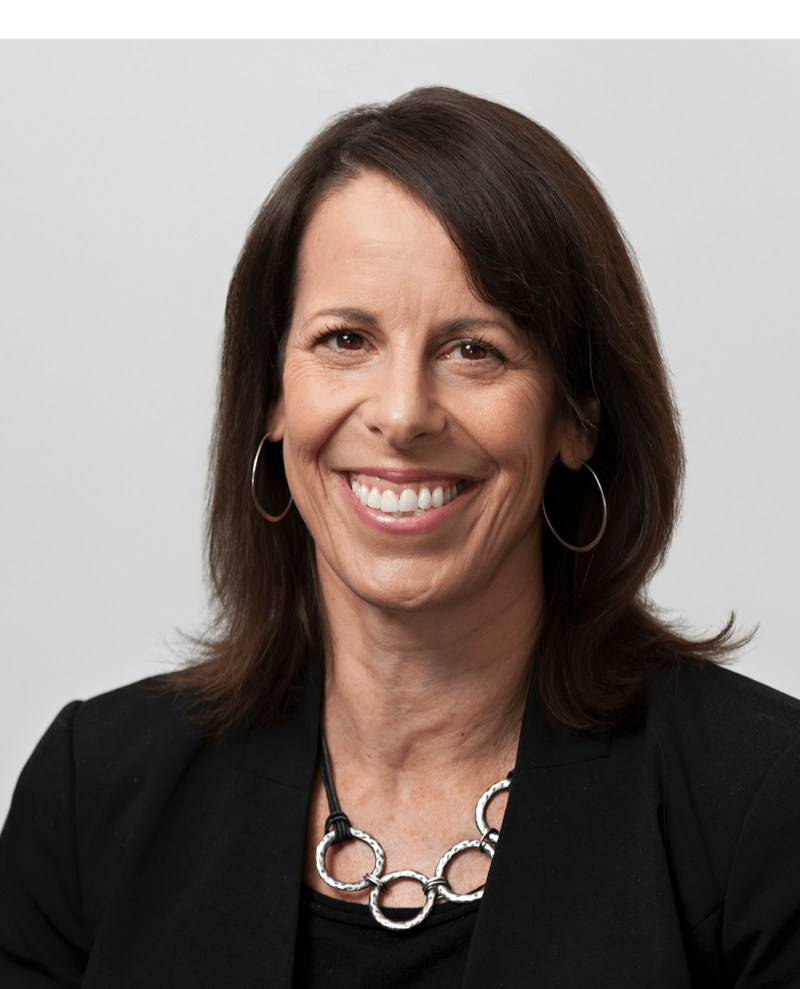.png)
Successful innovation requires more than just inventive brainstorming. It demands systematic thinking and a box filled with tools and techniques. To create new product opportunities with strategic intent, try a proven, step-by-step approach to innovation.
The businesses and agencies we work with are highly innovative in every way. They not only do they search for new product ideas, but they also keep their minds open to new ways of thinking about their business. They try new market research techniques. They dig for new ways to think about their customers and their creative processes.
Our July webinar on innovation featured the author of Innovation Step-by-Step, Darin Eich, Ph.D. Darin has helped organizations as diverse as Dartmouth College, Procter & Gamble, USA TODAY, and the United Nations.
Let’s take a closer look at Darin’s stimulating 7-step approach.
Step #1: Clarifying the challenge
Before you generate even one idea, make certain your innovation direction or product development is aligned with your mission and relevant to customers.
Get specific about the problem you’re solving or the opportunity on which you’re capitalizing. How you word your challenge matters.
Get a clear idea of what your innovation challenge really is by gathering a diverse range of views, not just the opinion of the CEO. Get the opinion of the people you serve. What do they think the problems, challenges and opportunities are?
“Don’t innovate in isolation. Mine social media for what customers are thinking about and clarify the challenge even more specifically to your customers,” says Darin.
Step #2: Formulating the questions
Turn your challenge into a series of questions. Organize the questions you develop in order from more general to more specific.
Let each question become a catalyst that helps you develop a number of additional specific questions. In the process of developing and refining questions, what you’re looking for are more ways to help someone make creative connections that spark ideas.
Ask those questions in brainstorming sessions, or in market research — in-person focus groups or online communities.
“Here is where you will discover the power of smarter questions. Many more quality questions equals many more ideas during the innovation process,” says Darin.
Step #3: Generating the ideas
Use the questions from Step #2 to generate ideas. A common mistake at this point is to minimize the possibilities by judging ideas too soon.
Darin says, “Observe what kinds of ideas arise, but don’t judge them yet. That’s what Step #4 is all about.”
Shoot for 100 ideas. Generate ideas yourself, and gather more from outside sources.
Step #4: Analyzing and synthesizing ideas
Once you have a lot of ideas, sort them into categories. Some ideas may be more emotional, technical, absurd, workable or predictable. Place the ideas into buckets.
Then put the ideas into a funnel to narrow them down. Sift and winnow. Move from having too many ideas to the ones you want to really develop. For example, synthesize 500 ideas down to 100, and 100 down to 50, and 50 down to 5.
“Don’t be surprised if you find yourself combining ideas,” says Darin Eich.
Step #5: Developing concepts
Build and extend your ideas a bit more. Put some flesh on those bones. Develop your best ideas into more full-blown concepts.
“Create concept boards for each one — concepts that you might show customers. Sometimes I just use 3x5 index cards to start,” says Darin.
This is where you breathe life into your idea. Try to imagine the idea realized, packaged, and presented to your customer. It’s all conceptual of course, but imagining can push the idea forward to let you better evaluate.
The innovation never stops, even after the launch.
Step #6: Testing and selecting concepts
Now you’re getting close to launching your innovation or solution. You can present the ideas as visual information on index cards, in sketches, or on a "whiteboard" in a platform like Digsite.
Test out the concepts that remain to see if some are better than others. See how your stakeholders feel about these concepts.
Maybe this is where your company takes a concept to the prototype stage or you add more visual elements to your communications.
Step #7: Communicating and advancing
Creating and developing your best product idea is one thing. How and where you communicate your best idea is a whole other matter.
You are ready to take action and launch it. You may feel the urge to hesitate, but don’t. Your idea doesn't have to be perfect. Improvements can still come to you when you see how people respond to your idea.
“When the process is used correctly, I’ve seen one person create a hundred ideas in just 2 hours. Imagine what you could do with more people using this system,” says Darin. “Use obstacles along the way as growth opportunities. If necessary, return to Step #1 and refine the challenge. Then begin again because innovation never stops.”
I like the thoroughness of Darin’s approach. It sharpens my thinking, multiplies the possibilities, and streamlines the collaborative process.
Yes, innovation can be an intuitive journey where you follow your instincts and whims, and nice accidents may happen along the way.
But with the rapid pace of change quickly wearing out new products each day, businesses can’t afford to depend on the muse alone. Companies need to keep their new product pipeline full, and a methodical approach to innovation is the answer.
I am reminded of what inventor Thomas Edison said:
“Genius is one percent inspiration and ninety-nine percent perspiration. Accordingly, a 'genius' is often merely a talented person who has done all of his or her homework.”
Excuse me… I feel an idea coming on.

Wondering how to test feedback on your innovative ideas?
See the ways you can use Digsite to understand user needs more clearly and answer the why questions to design, build and iterate better products and services quickly with our quick guide to innovation. You'll also see how several real-world companies have used flexible online qual throughout different stages of their agile development cycle.



